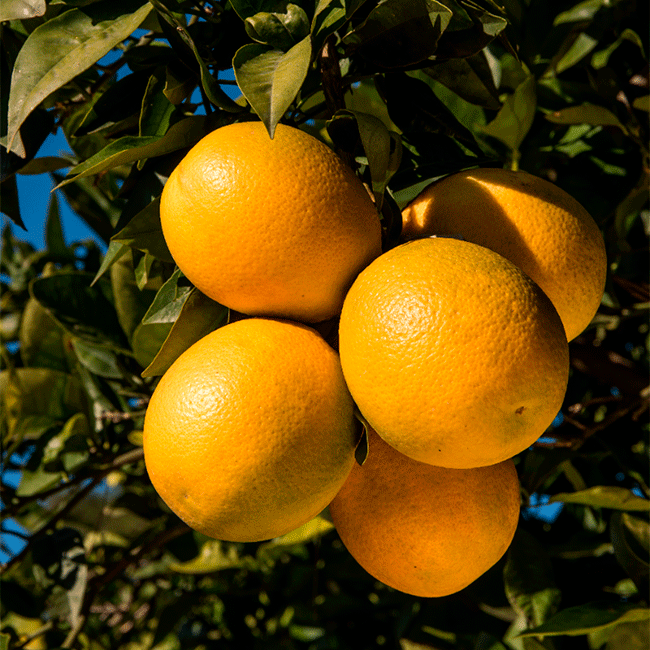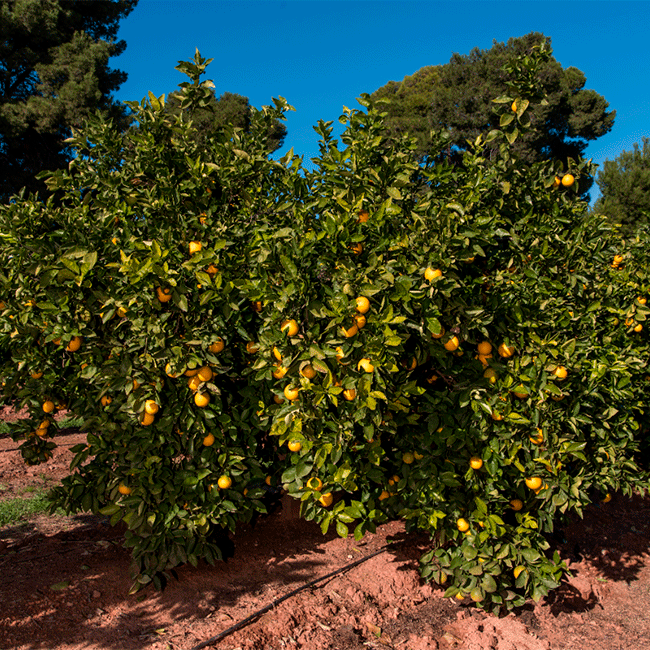.png.transform/rendition-xs/image_image%20(1).png)
Spanish Oranges: Excellent Quality And A Wide Range Of Varietals
Oranges have been a signature agricultural product of Spain for almost a millennium, but growers are still finding new ways to connect with foreign markets.

Oranges are not native to Spain, but they have colored the hills and scented the cities of Andalusia since the Moors planted the first seeds some 800 years ago. Which is to say, they came to belong here. Across the centuries, and the provinces, different soil has supported different varietals. The type introduced from Asia, via those Arab growers out of North Africa, was citrus aurantium, or naranja amarga, now known as the Seville Orange – more green than orange in appearance, and more bitter-tasting than its fragrant blossoms would suggest.
Unsuspecting visitors to Seville will sometimes peel and bite one of the fruits hanging or falling from the 14,000 trees that decorate the streets. They’re in for a sour surprise, as this particular citrus is too rich in pectin to be eaten fresh, and is more commonly used for oils, teas, and especially British marmalades.
The region of the Valencia, and its adjoining “orange grove coast”, is better known for sweeter varietals, though the Valencia orange itself (or citrus sinensis) is a grapefruit-mandarin hybrid developed by a Californian agronomist, who named it in honour of that verdant Mediterranean region, often called “the orchard of Spain.”
Spain, biggest orange exporter in Europe

Today, Valencian farms account for about 75% of the country’s oranges and mandarins. With the remainder contributed from Andalusia, Catalonia, and Murcia, Spain produced more than 3.7 million metric tonnes in the 2018-19 growing season, and exported more than 1.25 million tonnes, to a value of well over €1 billion. By far the biggest producer and exporter in Europe, Spain is also the fifth-biggest in the world, and represents over one-quarter of the global market.
There are any number of reasons for that primacy, says Juan José Bas, an agricultural engineer and entrepeneur whose parents and grandparents were orange farmers.
“Spain offers excellent quality, with a wide range of varietals ready for harvest on different dates, maximizing the consumption season. Plus, a strategic location in the EU to quickly deliver fresh produce.” At the same time, Bas knows from generations of experience how labour-intensive the process can be, with all fruit for fresh useage picked by hand and clipped from the stem, and farmers like his father working all year toward a narrow window in which to actually sell. The traditional route to market can also be a “long path”, he says, by way of intermediaries who tend to reduce profit margins, increase sales prices, and add to the potential for crop wastage.
For this reason, Bas founded the internet selling portal Naranjas y Frutas in 2012, as a means of connecting farmers directly to buyers. He believes that the future is the “farmer-exporter, organized to make and sell his product independently.” Some 3000 growers of oranges and other crops how post their wares through the website, for the attention of more than 200 subscribing international businesses looking to buy straight from source. Depending on their needs, some wholesalers will purchase by the pallet, and some by the tree itself, cultivating an even closer relationship with the producer.
Tailoring orange harvests in Spain
This model has become popular across Europe, says Blas, with Germany and France being the quickest and keenest to deal with Spanish farmer-exporters. Those countries, along with Nordic nations like Sweden, have also proven most enthusiastic markets for the like-minded CrowdFarming platform, which allows producers to tailor their harvests to consumer demand.
It’s an offshoot of the family business Naranjas del Carmen, which in turn began 10 years ago when brothers Gabriel and Gonzalo Úrculo quit their jobs to take over their grandfather’s decaying orchard in the Valencian village of Bétera. The local microclimate, with vast temperature differentials between night and day, makes for particularly good navel lane late oranges, but the Úrculos were struggling until they began selling and shipping directly to consumers – first family, then friends, then friends of friends, and so on.
Cutting through the traditional supply chain, they devised a system whereby customers could pay to adopt individual orange trees and receive their fruit when ready. CrowdFarming was born in 2015, and “our way of working changed overnight”, says Gonzalo. “We no longer only produced oranges, but we had to grow and care for each tree as if it were the only one. Growing each tree knowing that someone was waiting for its harvest motivates us to do our job better.”
Within a few years, all 13,000 trees had been spoken for, and more than 100 other farmers had joined the platform to sell oranges, mandarins, pomegranates and olives from across the region and beyond. In an age where fruit can be eaten a half a world away from where it was grown, this system has also served to reconnect foreign consumers to the Spanish source of their morning orange juice, as German, Swiss, or Swedish owners of the Úrculos trees will often travel to visit them in Bétera. As Lena Manz of CrowdFarming puts it: “Taking a selfie with your orange tree is all the rage.”
Text: Stephen Phelan

